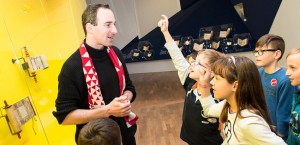
Schoolchildren on a guided tour of the exhibition “The Creation of the World”
© Jewish Museum Berlin, photo: Nadja Rentzsch
“I know!” shouts Tamo* (aged 10): “It’s Jewish writing!” “It’s called Hebrew—Hebrew writing” Mia (aged 10) corrects him. She knows the term because her best friend comes from Israel. She has seen letters like this before, at her friend’s house. Alexander (aged 34) chuckles. He works at the Jewish Museum and is giving a group of primary schoolchildren from Berlin a tour of “The Creation of the World,” our current temporary exhibition. On display are historical manuscripts and artful illustrations. → continue reading
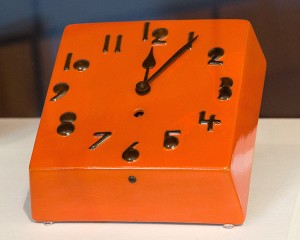
Clock, designed by Greta Heimann-Loebenstein.
Gift from the heirs of Greta Heimann-Loebenstein.
© Jewish Museum Berlin, photo: Nadja Rentzsch
“I chose this clock,” says Leonie* (8 years old) pointing to the showcase. The clock is red and the numbers look a bit strange. She laughs. “A clay clock!” She’s never seen anything like it. The children study the cups, pots, and vases in the big cabinet intently. They gaze, curiously, at the shapes, colors, and designs. They’re supposed to pick the object they like best. Then they’ll learn the name of the ceramicist who made it, its purpose and appearance.
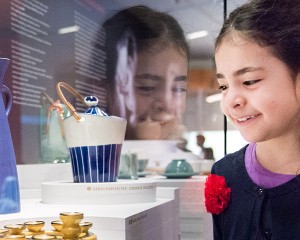
Children’s tour through the cabinet exhibition “Tonalities. Jewish Women Ceramicists from Germany after 1933”
© Jewish Museum Berlin, photo: Nadja Rentzsch
Jona (7) exclaims: “I like this bowl best. Grete made it.” “I think that design is lovely. What would you put in the bowl?” Anna (43) asks him.
Anna is guiding the children from a Berlin elementary school through the cabinet exhibition “Tonalities. Jewish Women Ceramicists from Germany after 1933.” Without hesitating, Jona answers: “Apples or bananas, or even nuts.” “Maybe even pears, or bread!” calls out Elsa (8).
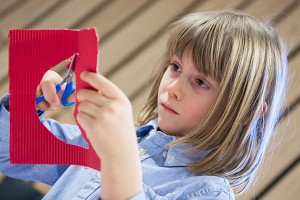
Workshop at the studio in the Academy of the Jewish Museum Berlin
© Jewish Museum Berlin, photo: Nadja Rentzsch
Her favorite object is a candlestick. It’s beige and was made by the ceramicist Hanna. Anna asks the class, “Do you all know what celebration this candlestick would be used for?” Leonie’s hand flies up; she knows the answer: Hanukkah. She has just participated in a candle-dipping workshop for the Jewish Festival of Lights in December.
After the tour, the children start working on their own projects. → continue reading
There are people who visit the special exhibition “The Whole Truth” not once or twice but a few dozen times: museum guides, those of us who accompany visitors through the exhibition. This time, though, our job isn’t to introduce the exhibits and their deeper meaning but instead to elicit commentary from this very real and tangible general public – and to moderate any discussion that follows. After all, the questions on which the exhibition is based also came from visitors. The museum reflects them in a great number of objects that the curators sought out.
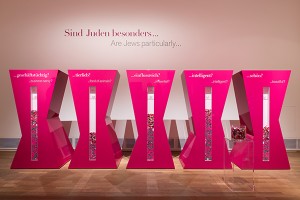
Barometer for the question “Are Jews particularly …?” in the exhibition “The Whole Truth”
© Jewish Museum Berlin, photo: Linus Lintner
The exhibits are very various and consistently surprising; they strike a wide range of cadences as well. Most visitors are astounded and speechless at the chutzpah of some curatorial arrangements. But as soon as a group begins to move through the exhibition and to engage with its guide, the speechlessness transforms into eloquence. → continue reading




